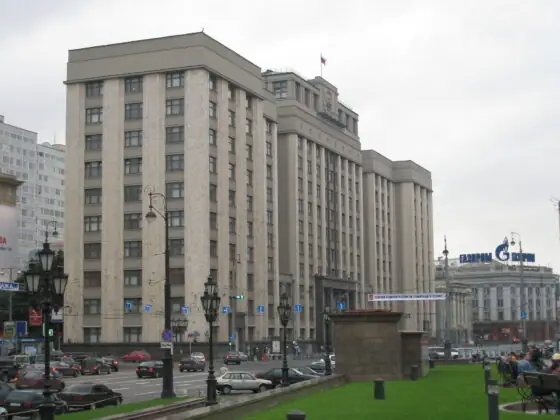(PONARS Eurasia Policy Memo) When compared to other post-Soviet countries, Ukraine seems to have responded to the COVID-19 challenge quite well. However, this might be an illusion. There has been massive underreporting and the disease initially struck sparsely populated rural areas, leading many citizens to perceive that isolation measures are an unnecessary threat to their livelihood. But now, the virus is no longer contained in the countryside and it has exacerbated tensions between authorities at different levels. To compound the challenge, Ukraine’s healthcare system is turbulent. Doctors and nurses are becoming ill and an identification, isolation, and tracing strategy is missing. Meanwhile, the government has been hatching plans to terminate the quarantine, even while neighboring Belarus and Russia are increasingly infiltrated by the virus. The Zelensky government has navigated the crisis so far, but seems to have deflected blame a little too far toward the fairly recently departed prime and health ministers. Ukraine’s place in the current-but-changing COVID-19 rankings is fortunate positioning, especially if one considers the dismal deterioration of Russia and Belarus, with whom it shares many post-Soviet institutional and infrastructural frameworks. The Ukraine scenario looks like a recipe for a disaster and this is not a time for nonchalance.
Reasons for Being Unreasonable
The COVID-19 pandemic is perceived as a distant threat by half of Ukrainians. When they face the choice between the small likelihood of catching the disease and sacrificing their economic activities, or skipping a pleasant spring afternoon stroll, many are eager to take their chances. A recent Rating Group poll on public opinion in Ukraine reveals that 87 percent of respondents believe that the virus threat is tangible for Ukraine in general, but only 51 percent believe it poses a personal danger.
Apart from counting people strolling down Kyiv’s central Khreshchatyk Avenue on an early springtime weekend—though it may be a surprisingly relevant social scientific indicator—there are ways of measuring whether or not Ukrainians are following social isolation requirements. The leading mobile phone operator Kyivstar estimated that only half of residents in Ivano-Frankivsk, a regional capital in western Ukraine, are staying at home. This sounds low, but in fact, Ivano-Frankivsk is a champion in this regard. In other regional capitals, as few as 10 percent of people have been complying with quarantine regulations. Prime Minister Denys Shmyhal has acknowledged that up to 70 percent of the population continues to go to work despite the quarantine.
Social isolation is circumvented not only by the populace but by the political class. It was revealed that a high-end restaurant owned by a member of the parliament (from the ruling “Servant of the People” party) has been operational despite the explicit governmental decree that such establishments must not function during the outbreak.
It Came from the West, Not the East
The cavalier attitude toward the pandemic has some rationality. The viral hazard is perceived as insignificant due to a constellation of luck and administrative measures. However, the former is running out and the latter is less and less effective. A combination of two auspicious, lucky features initially inhibited the spread of the disease in Ukraine: the direction of international migration and the degree of urbanization. Since China was the original disease incubator, the dispersion trajectory of the virus was contingent upon visitors to the “Middle Kingdom” carrying it back to their homelands. However, both Ukrainian tourists and labor migrants prefer other destinations; according to official data, there were only 540 Ukrainians in China when the crisis began, including, however, 53 in Wuhan.
Furthermore, the spatial clustering of Ukrainian urban areas initially halted the viral spread. Although the degree of Ukrainian urbanization reaches 70 percent—Ukraine equals Italy in this respect—urban areas are much more dispersed. Moreover, three out of four of the most afflicted regions in Ukraine—Chernivtsi (at time of writing, 2,388 reported cases), Ivano-Frankivsk (1,361 reported cases), and Ternopil (1,020 reported cases)—belong to the least urbanized regions.
Migratory routes are also responsible for Ukraine’s trends. All three regions have a considerable chunk of the population that works in the EU. As COVID-19 engulfed Italy and Spain, these migrants returned home. Thus, the coronavirus penetrated Ukraine not from the East, but the West. Since the Chernivtsi, Ivano-Frankivsk, and Ternopil regions are predominantly rural, the migrants in question returned to their villages, some being infected. Still, the virus was effectively contained in remote areas because it was not able to spread easily between the localized sites of infection.
Migratory trends and urban clustering only temporarily managed to halt the spread of the virus. A consistent and vigorous policy is a prerequisite for eradicating the threat. Ukraine was among the first East European nations to opt for closing borders and limiting the internal movement of people. Besides, the early suspension of educational and business activities contributed to lessening the chances for schools, universities, restaurants, and shopping malls to serve as viral breeding-grounds. These policies all helped to prevent the rapid transmission of the disease throughout the country. However, these early achievements must not be interpreted over-optimistically.
The Lull Before the Storm?
Four factors make Ukraine’s responses to the COVID-19 crisis less impressive than they may appear to be at first glance. First, the virus is no longer contained in predominantly rural areas. The single most afflicted region now is the city of Kyiv (at the time of writing, 1,978 reported cases), alongside its highly urbanized and tightly clustered metropolitan area (976 reported cases). The virus has now been feeding on 5 million individuals as potential hosts in the center of the country. Political paralysis is not out of question either. Several parliamentarians have been infected and the body is using virtual procedures for sessions.
Second, quarantine measures are highly detrimental to the national economy. In Ukraine, many workers are private contractors or run small businesses. By suspending their work, they have no income. According to a poll this past April, 55 percent of respondents said that they only had enough savings for a month of subsistence. According to some estimations, 1 million people have lost their incomes. Official data suggest that since the quarantine was imposed, unemployed has risen by 148,000, which is 48 percent higher than it was in the spring of 2019. The impact of the quarantine upon the national economy and people’s private lives will be immense. This is partly why people tend to ignore the threat and keep on working. The hasty Ukrainian government decisions to ease quarantine regulations and allow businesses to operate from May 11 is an attempt to lessen the negative economic impact caused by the pandemic—just as is the case in many other European countries.
Third, the quarantine has exacerbated political tensions. This is primarily manifested by popular mobilization and a confrontation between local and national authorities. Although mass rallies are effectively banned under the quarantine regime, in the last week of April, citizens in the capital organized several pickets around the presidential office and the parliament. There were also protests in the regions. People demanded that food markets and industries and businesses be opened. Under popular pressure, some local authorities decided to terminate their quarantines ahead of any governmental decrees on the matter. An example is Cherkasy whose mayor had permitted small businesses to re-open on May 1. This decision enraged President Volodymyr Zelensky and Minister of Interior Arsen Avakov, who launched an official investigation into the mayor’s actions. In response, the mayor argued that the economic idleness had provoked a serious fiscal crisis in his city. Such attitudes are not rare and should be taken into account by the national authorities provoking them to be more responsive. A similar story happened in the regional capital of Dnipro, a city of 1 million, as well as in several smaller towns. The fact that after only a short time of such domestic confrontation the national government opted to lift quarantine measures, indicates its lack of capacity to enforce its own rulings nation-wide. Not long ago, despite governmental prohibitions, people attended Easter services, did not wear masks, and those who returned from abroad were often ignored by healthcare officials.
Finally, to compound all challenges, the healthcare system in Ukraine suffers from dysfunctionality. Between August 2019 and March 2020, the Ministry of Public Health held a game of musical chairs with four different people serving as head; three of them had to deal directly with the COVID-19 crisis. But the lack of continuity in the head office is not the only issue. For instance, Ukraine has the highest ratio of hospital beds per person in Europe, and the state allocates financing to them according to this number and not for actual medical procedures performed (doctor-patient care). Ukraine’s current healthcare reforms aim to change this and financially award practitioners who actually work with patients rather than on (empty) bed numbers. However, somewhat tragically, this much-needed optimization goes contrary to COVID-19 provisions, which require more doctors, generalists, and specialists—and more beds. Also, one-fifth of medical personnel are estimated to already be infected.
When these features are combined with continental trends, Ukraine’s reaction to the crisis demands a re-evaluation. By mid-May 2020, at the time of this publication, the focal point of COVID-19 had shifted eastward, toward Belarus and Russia. Ukraine is situated in the epicenter of this wave. However, Ukrainian healthcare officials are performing the fewest COVID-19 tests in Europe. The Minister of Health acknowledged that the government cannot afford broad testing programs.
Therefore, underreporting is at least partially responsible for the low rate of diagnosed cases. This is only the tip of the iceberg because without proper testing, effective identification and isolation of infected individuals is unfeasible. Meanwhile, citizens, after two-months of idleness and pecuniary losses, are eager to resume their economic and leisure activities. For its part, the government has been unable to enforce strict quarantines and actually sought to loosen regulations by way of claims made by Shmyhal on May 12 that the country appears to be at the peak of the spread of the disease.
Consequences
The political repercussions of COVID-19-crisis mismanagement are bound to be significant. Since the introduction of the quarantine, the Zelensky regime—despite criticism by some professionals and political opponents—managed not to alienate its core constituency. Despite some decline in public support, Zelensky still holds a comfortable position as the most positively perceived politician. Moreover, another public poll reveals peculiar doublethink: Ukrainians fear that the situation around the coronavirus is deteriorating but 61 percent remain convinced that the regime is dealing with the COVID-19 challenge “in the best possible way.” It is arguable that Zelensky personally benefited from the reshuffling of the government in early March 2020, thereby shifting discontent to ex-Prime Minister Oleksiy Honcharuk and his team. Likewise, blaming one’s predecessor is the preferable strategy concerning the miserable healthcare situation. The head of the system, Uliana Suprun, left office nine months before the arrival of the virus in Ukraine, but she received sole attribution for the system’s deficiencies. Capitalizing on popular discontent with Suprun, the regime even decided to readjust healthcare reform.
In short, the Zelensky regime passed unscathed through the first phase of the epidemic. However, since the country is being unevenly touched by the disease, some regional authorities deem the quarantine measures too timid while others say it is too harsh. This will have political effects revealed in the next local elections scheduled for October 2020. If the situation deteriorates, the political regime responses will more closely be criticized.
Ivan Gomza is Research Professor of Public Policy and Governance at the Kyiv School of Economics. Some notions presented here stem from discussions with Volodymyr Dubovyk at Mechnikov National University, Odessa.
[PDF]
Homepage image credit.











